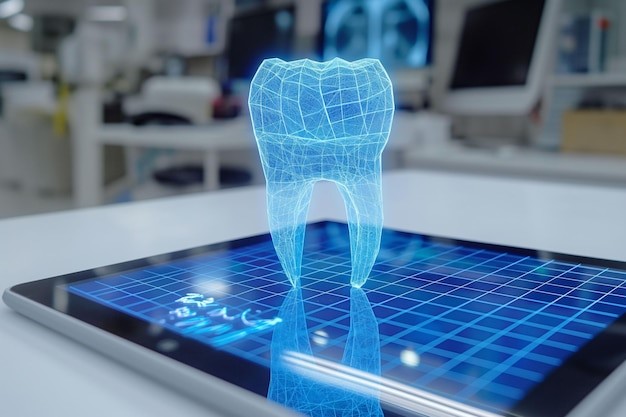The field of dentistry is undergoing a remarkable transformation thanks to digital technology. Digital dentistry refers to the use of advanced digital tools and techniques to improve the diagnosis, treatment, and management of oral health. This innovation is reshaping the way dentists work and how patients experience dental care.
In this article, we will explore what digital dentistry entails, the latest technologies involved, and what patients can expect from the future of oral health care. Understanding these advances can help you make informed decisions and embrace modern dental treatments with confidence.
What Is Digital Dentistry?
Digital dentistry integrates digital technologies into every aspect of dental care. From digital imaging to computer-aided design and manufacturing (CAD/CAM), these tools enhance precision, efficiency, and patient comfort.
Key Components of Digital Dentistry
- Digital Impressions: Instead of traditional molds, dentists use intraoral scanners to create accurate 3D images of teeth and gums.
- 3D Imaging and Cone Beam CT: Advanced imaging provides detailed views of the oral anatomy, aiding in diagnosis and treatment planning.
- CAD/CAM Technology: Allows dentists to design and fabricate crowns, bridges, and dentures in the office, often in a single visit.
- Digital Smile Design: Software that helps visualize and plan cosmetic treatments tailored to the patient’s unique facial features.
- Teledentistry: Remote consultations and monitoring through digital communication tools.
Advantages of Digital Dentistry for Patients
Digital dentistry offers many benefits that improve the overall dental experience.
Enhanced Accuracy and Precision
Digital impressions and 3D imaging reduce errors, leading to better-fitting restorations and more effective treatments.
Faster and More Comfortable Procedures
Intraoral scanners eliminate the discomfort of traditional molds. Same-day crowns and restorations reduce multiple visits.
Improved Diagnosis and Treatment Planning
Detailed digital images help detect issues earlier and create personalized treatment plans.
Better Communication and Visualization
Digital smile design tools allow patients to see expected results before treatment begins.
Increased Access Through Teledentistry
Remote consultations make dental care accessible to those in rural or underserved areas.
How Digital Dentistry Is Shaping the Future
The future of dentistry will be defined by continued technological innovation and integration.
Artificial Intelligence (AI) in Dentistry
AI-powered software is emerging to assist in diagnosis, predict treatment outcomes, and personalize care plans.
3D Printing and Regenerative Dentistry
3D printing enables rapid fabrication of customized dental appliances. Regenerative approaches aim to repair or replace damaged tissues biologically.
Robotics and Automation
Robotic-assisted surgeries and automated procedures promise increased precision and reduced human error.
Personalized Medicine and Genomics
Genetic testing could tailor preventive and therapeutic dental care to individual risk profiles.
What Patients Should Know Before Embracing Digital Dentistry
While digital dentistry offers many advantages, patients should be aware of important considerations.
Cost and Insurance Coverage
Advanced technology can sometimes mean higher costs. Insurance policies may vary in coverage for digital procedures.
Dentist’s Expertise and Technology Availability
Not all dental offices have adopted the latest technologies. Choose a provider experienced in digital dentistry for optimal results.
Data Privacy and Security
Digital records and telehealth require strict privacy protections. Patients should inquire about data security measures.
Preparing for a Digital Dental Visit
To get the most from your digital dental care experience, consider these tips:
- Share your medical and dental history thoroughly.
- Ask your dentist to explain the digital tools they use.
- Discuss treatment options and timelines.
- Follow pre- and post-procedure instructions carefully.
Conclusion
Digital dentistry is revolutionizing oral health care by offering greater accuracy, comfort, and accessibility. Patients stand to benefit from faster procedures, personalized treatments, and enhanced communication with their dental providers. As technology continues to advance, the future of dentistry looks promising, with innovations like AI, 3D printing, and telehealth shaping a new era of patient-centered care.
Embracing digital dentistry empowers patients to take control of their oral health and experience dentistry in ways that were once unimaginable. Whether you’re visiting for a routine checkup or advanced treatment, understanding digital dentistry will help you make confident and informed decisions.
FAQs
1. What is digital dentistry?
Digital dentistry uses digital tools and technology such as 3D imaging, intraoral scanners, and CAD/CAM to improve dental care.
2. Are digital dental procedures more expensive?
They can be, due to advanced technology, but many patients find the benefits justify the cost. Insurance coverage varies.
3. How does digital dentistry improve patient comfort?
Digital impressions eliminate uncomfortable molds, and same-day restorations reduce multiple visits.
4. Can I get a remote consultation with my dentist?
Yes, teledentistry allows for remote consultations and monitoring, improving access to care.
5. Is my personal data safe with digital dentistry?
Dental offices must follow strict privacy laws, but it’s important to ask about their data security practices.





